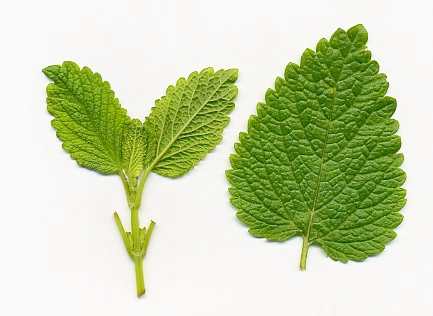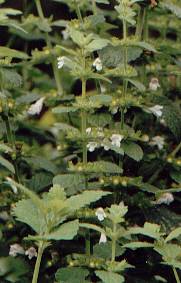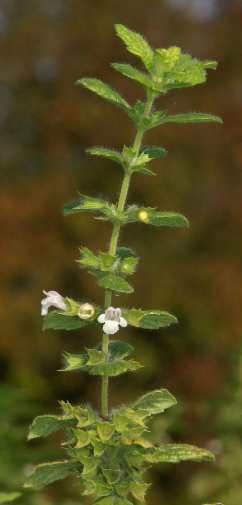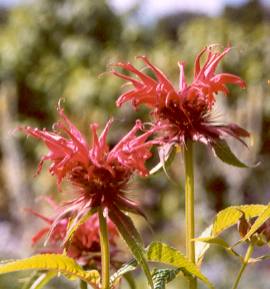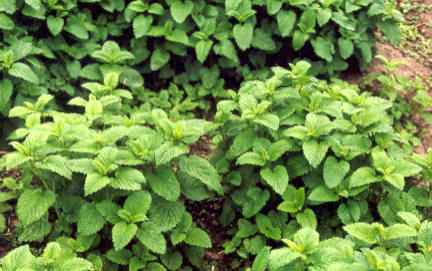
|
| Lemon balm plant |
In Central Europe, lemon balm is sometimes used to flavour sweet drinks. The leaves make an interesting decoration on many dishes and may be used generously if you (and your guests) like the aroma. They fit best to fish, poultry and salads; it is also suggested to use balm leaves for any dish containing lemon juice to get a more intensive lemon aroma. If available, the fresh leaves are to be preferred. True lovers of this herb may want to try a pesto made of lemon balm leaves instead of basil.
Although lemon balm is not one of the traditional seven herbs
used for
the Frankfurt Green Sauce, it is a recommendable addition to this
traditional recipe (see borage).
Lemon balm has a great affinity for fresh fruits, especially apples; thus, it is sometimes found in apple-based desserts. Balm can also be used to flavour other fruits, fruit salads or fruit-based desserts (see also lemon verbena). Because herbal vinegar is mostly made from apple vinegar, it may benefit from a few balm leaves (see dill).
Bergamot (not to be confused with the homonymous orange relative) is a related plant with similar,
yet harsher and less lovely flavour.
Bergamot is rather popular in the USA for infusions; this usage
dates back to the Oswego Indians and has some historic significance (Boston
Tea Party).
